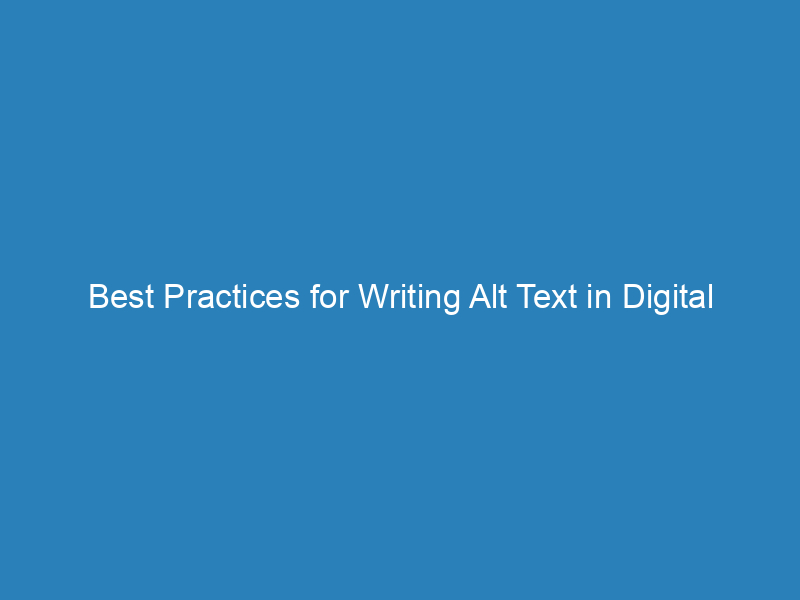
Best Practices for Writing Alt Text in Digital Accessibility
In today’s digital landscape, accessibility is critical for ensuring that all users can engage with online content effectively. One of the key components of digital accessibility is the use of Alternative (Alt) Text for images and graphics. This brief text description aids users who rely on screen readers or other assistive technologies, providing them with essential context about visual content.
Understanding Alt Text
Alt Text serves as a bridge between visual elements and their meaning. When integrating images into digital materials, it’s important to include concise and descriptive alt text. This practice not only enhances accessibility but also improves the overall user experience for everyone visiting your site.
Best Practices for Writing Alt Text
- Keep it brief, generally one to two sentences.
- Focus on the image’s purpose rather than describing every detail.
- Avoid starting with phrases like “image of” or “picture of.”
- Specify the type of image when relevant, such as logo or illustration.
- Refrain from repeating information already present in the surrounding text.
- Conclude your alt text with a period.
Examples of Effective Alt Text
Photographs
When describing photographs, highlight specific elements that convey the image’s intent. For instance:
- Example 1: “A group of college students laughing and walking along a tree-lined pathway.”
- Example 2: “Harvard’s Memorial Church, featuring grand columns and banners displaying Harvard shields.”
Icons
Icons should communicate their function clearly:
- Logo: “Harvard’s Crimson Veritas Shield.”
- Action: “Download Syllabus PDF.”
- Link: “Visit the Harvard Library Instagram.”
Illustrations
For illustrations, focus on the intent behind the image:
- Example 1: “Cartoon of a businessman interviewing a candidate with scruffy hair and a long white beard; the caption reads, ‘Mr. Crusoe, I’m concerned about this 20-year gap in your resume.’
- Example 2: “Illustration depicting left and right brain theory, with organized text on the left and vibrant colors spilling from the right.”
Diagrams
For diagrams, summarize the key data points:
- Example 1: “Diagram of soil layers: organic layer, topsoil, subsoil, parent rock, and bedrock.”
- Example 2: “World map illustrating GDP per country in trillions, with the US leading at $20 trillion.”
Context Matters
Alt text should be tailored to the context in which the image appears. For example, the same image may require different alt text depending on the accompanying article. For instance:
- Use Case 1: In an article titled “Spring is Here,” you might use: “Students lounge in brightly colored Luxembourg chairs in Harvard Yard.”
- Use Case 2: In an article about Hollis Hall, the alt text could be: “Hollis Hall, a red brick building, located adjacent to the open grassy space of Harvard Yard.”
Additional Benefits of Alt Text
Besides improving accessibility, alt text can also enhance your website’s visibility in search engines. When images fail to load, alt text ensures that users still receive pertinent information, maintaining engagement even when visual elements are absent.
Resources and Further Learning
For those looking to deepen their understanding of alt text best practices and digital accessibility, there are numerous resources available. These can provide guidance on creating accessible content across various platforms.